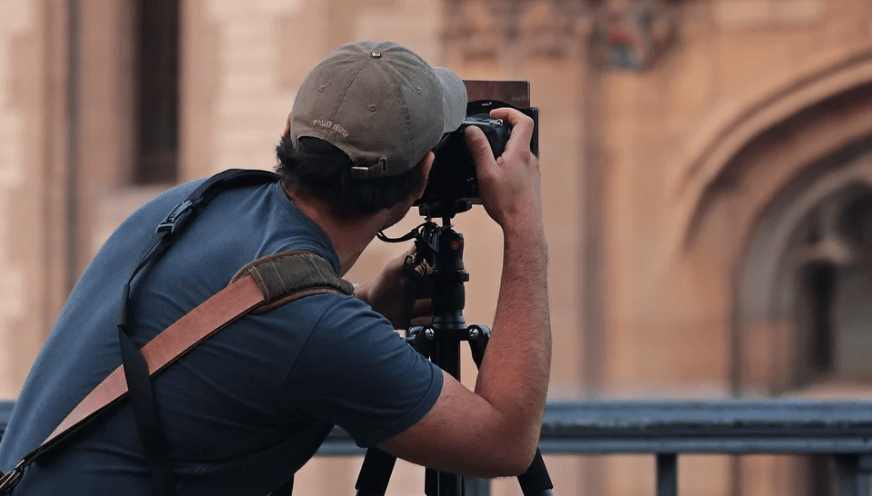Everyone makes mistakes when they start their careers. Learning from those mistakes is what makes them better with time. But, when you ignore these mistakes and keep on making them, this is what becomes the reason for your setback and inhibits your growth. The same rule applies to a photography career as well.
When you are a beginner and start your photography career, you tend to make some mistakes that may set you back in this field. Some of the most common mistakes that almost every beginner photographer makes are also easy to fix. When you first begin taking pictures, you may notice that your images are:
- Overexposed
- Poorly composed
- Underexposed
- Out of focus
- Or just plain boring and dull
However, do not stress out because it is part of the learning process. Thanks to digital photography, you can make as many mistakes and take as many photos as you want to perfect your craft. The most important factor towards the photography errors you certainly make is your attitude.
Your attitude can either drag you down or propel you to become a more creative, better photographer. Analyzing your mistakes and working on them can improve your pictures and help you grow.
Photography Mistakes That Can Set You Back
1. Shooting too Infrequently
Just like sports, in photography, the more you practice, the better you get. Taking good pictures is a difficult task. But the difficulty level becomes double when you only shoot once or twice a month. For example, if you do not take more pictures, you will be less familiar with your gear.
The less you shoot, the opportunity to practice things like working in different lighting conditions, framing and composition will be less too. So, what can you do about it? Shoot as frequently as you can; take it as a challenge to motivate yourself. If you do not get enough time, spending even twenty minutes with your camera every day will be sufficient to see improvement in the quality of your photos.
2. Not Knowing Your Camera Settings
You may have spent hundreds or thousands of dollars on a camera but were unable to understand its user manual without a magnifying glass. Don’t worry; you can find the user manual for most cameras online and in PDF format. You can download the PDF version from the manufacturer’s website. Go through the whole manual more than once before you start taking photos with it.
Be sure to learn how to change the main settings of your camera while you are going through the user manual. These are:
- ISO sensitivity
- Internal Camera Menu
- Focusing Modes (Continuous-servo AF, Single-servo AF)
- Exposure Compensation
- Aperture
- File type
- Focusing (Manual Focus and Automatic Focus)
- Format the memory card
- Shutter Speed
- White Balance (manual, preset, auto)
- Flash (how to turn on and off the built-in flash)
- Drive modes (High Continuous, Low Continuous, Single)
- Self-Timer
Memorize their location on your camera until making changes to the key settings become second nature.
3. Never Getting Out of Auto
It is not a bad thing to shoot in auto mode when you begin photography. With this mode, you do not have to worry about learning to manipulate things like ISO, shutter speed, and aperture. You can freely concentrate on the basics of composition.
However, never getting out of auto mode can stunt your growth as a photographer. Instead of learning to do things by yourself, you will be relying on the camera for all the technical work. It may be hard to get out of auto mode, but taking baby steps will be helpful.
Learn how to use shutter priority or aperture priority modes. In these modes, the camera works semi-automatically, which means it chooses settings on its own while you are free to change some of them. To get more control over the camera settings that the camera uses, learn how to shoot in program mode. Once you have mastered these modes, you can leap shooting in manual mode.
Compared to full auto mode, you become far more creative when you understand how to shoot in manual mode.
4. Not Learning the Basic Photographic Concepts and Terms
Just like you first learn to crawl before you can walk, the same thing applies to photography. Not learning the basics is the most common mistake that almost all beginner photographers make. So, to have a solid foundation to build upon, you need to master the basics. The combination of creativity and skill is what gives you great photos.
Therefore, take some time and learn everything about light, its significant role in creating an image, and its different types. Moreover, learn about ISO and how the changes in it can affect exposure. Understand how shutter speed, aperture, and ISO are the foundation of photographic exposure. There are plenty of courses and lessons available online as well that can help you master the basics.
5. Thinking it is The Fault of the Camera
There are times when we blame the camera for bad pictures, which is not always right. Buying a new camera that has more capabilities and is fancier will not solve this problem. So, do not waste your money buying an expensive camera and learn to take great photos with the camera you currently have.
Get familiar with the dials, modes, and setting, and use your understanding to learn how to take better pictures.
6. Not Using a Tripod
Certain situations require the use of a tripod. Generally, you feel the use of a tripod on a shutter speed at or below 1-60th seconds. The probability of camera shakes increases with long exposure and focal length. Hence, you will end up getting blurred images. Moreover, if your shutter speed is 1/50th or below and you are using a 50mm lens, you should better use a tripod.
You usually require a tripod for:
- Macro photography and close-ups of nature
- Long exposures
- Night and astrophotography
- Panning
- Evening real estate and interior photography
- When using a telephoto lens
- Time-lapse photography
- High Dynamic Range (HDR)
- Showing water in motion
- Nature photography
- Self-portraits
When you start using a tripod, you will notice a difference in your photography. It is because a tripod slows the photo-making process. Since you have to invest some time setting up a tripod, you automatically become more conscious of the photo you are taking.
You will make better decisions regarding exposure and composition when you slow down the image-making process. It results in fewer digital photography mistakes and better-quality photos. So, use a tripod whenever it is possible and suitable.
7. Expecting an Expensive Camera Will Make You a Good Photographer
Getting a new camera is exciting and fun for new as well as experienced photographers. A new camera can motivate you to test drive new features and go for a shoot. Though a larger sensor will give you better quality pictures, you will not become a pro photographer by using it.
Also, regardless of the camera you have, you still need to be familiar with all the settings. Learn to master the basics of composition and exposure. First, work on advancing your skills and knowledge of photography, then go and buy expensive gear for yourself.
You should know everything about your camera and know how to take full advantage of it. Once you know how to click better photos, you can then go ahead and upgrade your gear.
Avoid These Mistakes and Get Better
Your lack of knowledge and repetition of mistakes is holding you back in your photography career. Whether it is photography or any other field, not learning to master the basic concepts and terms can stunt your growth. So, start with the basics and learn from your mistakes. And remember, practice is the key to making yourself a professional photographer.
To advance your knowledge, you can also get help from experts by taking their courses. You can learn physically as well as through several online courses.

